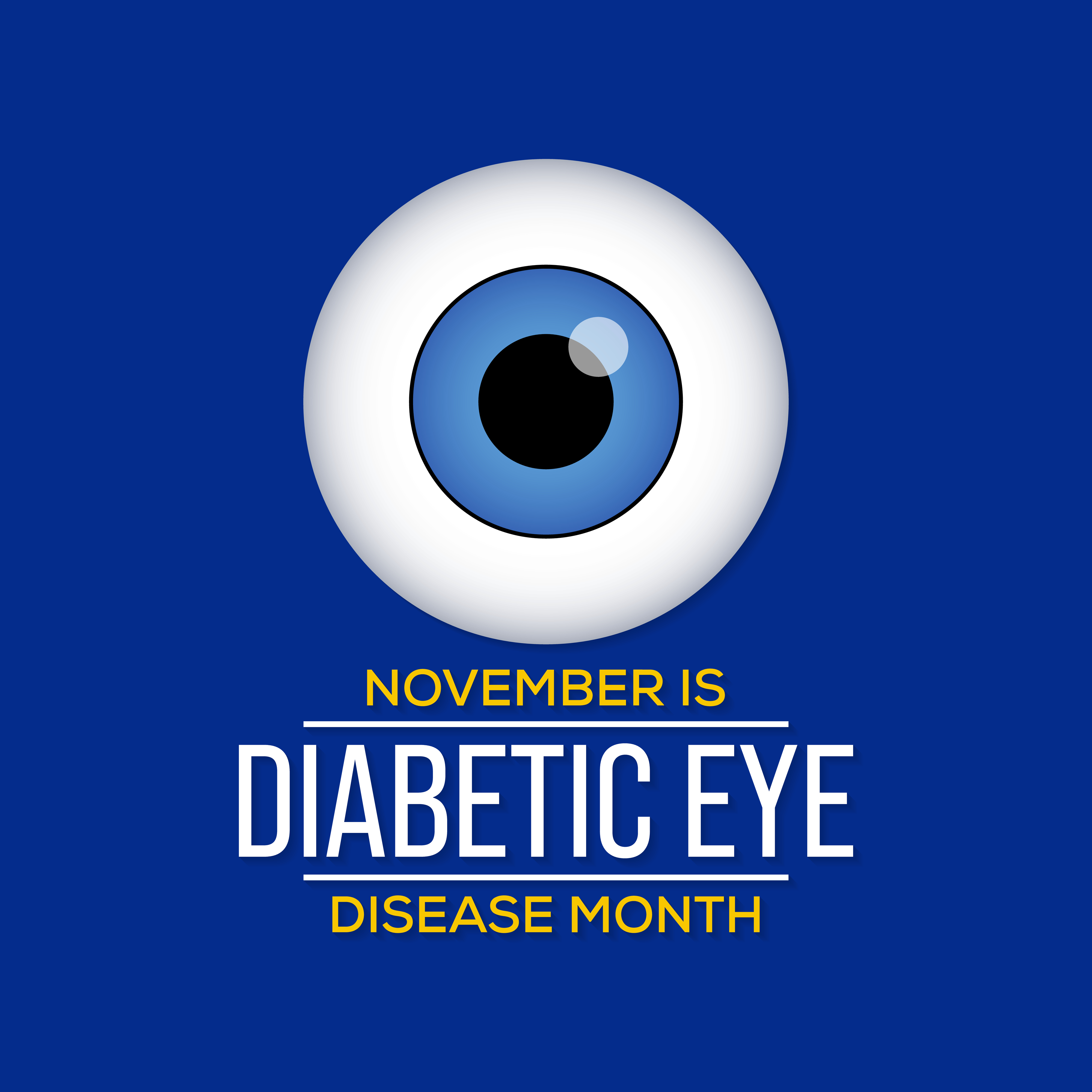
November is a critical time as we observe Diabetic Awareness Month, reminding us of the vital link between blood sugar control and long-term health. For millions of Americans, the most serious long-term risk of diabetes is to their vision. That's why we're focusing on Diabetic Retinopathy (DR) and Diabetic Macular Edema (DME)—the leading causes of vision loss in working-age adults in the United States.
The good news? The field of diabetic eye care is currently experiencing a technological and therapeutic revolution. From cutting-edge AI screening to sustained-release medication, here are the most important updates you need to know about protecting your sight in 2025.
1. The Detection Revolution: AI and Teleoptometry
The goal is simple: catch Diabetic Retinopathy early, before irreversible vision loss occurs. While the traditional Dilated Eye Exam (DEE) remains the cornerstone of diagnosis, digital technologies are rapidly closing access gaps and improving speed.
Digital Screening: A New Standard
Major health organizations are now validating advanced digital methods for initial screening:
Digital Retinal Photography: This high-resolution image capture of the retina is more than just a picture; it creates a permanent, documented baseline record of your eye health. This is ideal for annual screenings, allowing specialists to precisely track microscopic changes over time.
AI and Teleoptometry: This is where things get truly exciting. Teleoptometry allows for a high-quality retinal photo to be taken at a convenient location (like a primary care office) and sent to a retinal specialist for remote reading. Better yet, cutting-edge Artificial Intelligence (AI) can now rapidly scan these images to immediately detect early signs of damage, such as tiny red spots (microaneurysms) or bleeding (hemorrhages), ensuring patients get prompt specialist referrals.
This revolutionary approach helps increase compliance by making the screening process faster and more convenient.
2. Treatment Advancements: The Era of Durability
For sight-threatening DR and DME, the gold standard treatment involves Anti-VEGF injections, which block the growth of abnormal blood vessels and reduce fluid leakage. The major trend in 2025 is durability—extending the time between necessary treatments to dramatically reduce the burden on patients' lives.
Spotlight on Sustained-Release Therapy
The Susvimo Port Delivery System (PDS): This is a truly significant advance. The Susvimo implant is a tiny, refillable reservoir surgically placed in the eye. It works by continuously delivering a specialized anti-VEGF drug (ranibizumab). For qualifying patients with Diabetic Retinopathy, clinical data supports maintaining vision with refills potentially needed only every nine months. This is a massive leap forward from the frequent monthly or bi-monthly injections previously required.
Next-Generation Agents: Even traditional injection methods are improving. Newer molecules like Faricimab and high-dose Aflibercept 8mg are also demonstrating superior durability compared to older agents. Many patients managing their Diabetic Macular Edema (DME) can now comfortably extend their treatment intervals to three or four months while achieving excellent visual outcomes.
Non-Invasive Pipeline: For milder cases, research continues on non-invasive alternatives, including eye-drop drug candidates currently in clinical trials, which could one day revolutionize the treatment of early DME.
3. Key 2025 Screening Guidelines Summary (ADA Standards of Care)
Based on the latest recommendations from the ADA, adherence to a strict screening schedule is the most effective preventative step against vision loss.
Patient Type | Initial Screening Timeline | Subsequent Screenings |
Type 1 Diabetes | Within 5 years of diagnosis | Annually (or every 1–2 years if no retinopathy is present and glucose control is excellent) |
Type 2 Diabetes | Promptly at the time of diagnosis | At least annually |
Pregnant Patients | Before pregnancy or during the first trimester | Close monitoring every trimester and for up to one year postpartum |
4. Frequently Asked Questions (FAQ)
Q: Why do I need an eye exam if my vision is clear?
A: Diabetic Retinopathy is often asymptomatic in its early stages. By the time you notice symptoms like blurry vision or floaters, the damage may be advanced. A comprehensive eye exam that includes a Digital Retinal Photograph or an AI screening is the only way to catch the early, treatable signs of blood vessel damage before it impacts your central vision.
Q: What is the single most important thing I can do to protect my eyes?
A: The most effective preventative measure against Diabetic Retinopathy is consistent and rigorous control of your blood sugar (A1C) and blood pressure. These two factors directly cause the initial damage to the retina's tiny blood vessels.
Q: What is the difference between diabetic retinopathy (DR) and diabetic macular edema (DME)?
A: Diabetic Retinopathy (DR) is the overall condition describing damage (leakage, bleeding, or abnormal growth) to the retina's blood vessels. Diabetic Macular Edema (DME) is a complication of DR, where the damaged vessels leak fluid specifically into the macula (the center of the retina), causing swelling and blurry central vision. DME is the primary driver of central vision loss in diabetes.
Q: How often will I need anti-VEGF injections with the newer treatments like Susvimo?
A: The goal of newer treatments is to reduce the frequency of injections. While the schedule is highly personalized, many patients using the Susvimo implant for Diabetic Retinopathy can go up to 9 months between refills. For next-generation anti-VEGF agents, intervals of 3 to 4 months are becoming common, significantly improving the patient experience.
Protecting Your Vision
The field of diabetic eye disease management has never been more advanced. With the power of new diagnostic tools and highly durable treatments, we have a greater ability than ever before to prevent vision loss.
If you have diabetes, please prioritize your annual Diabetic Eye Exam. It’s the single most important action you can take this November to safeguard your sight for the future. Contact our office today to schedule your comprehensive screening.








